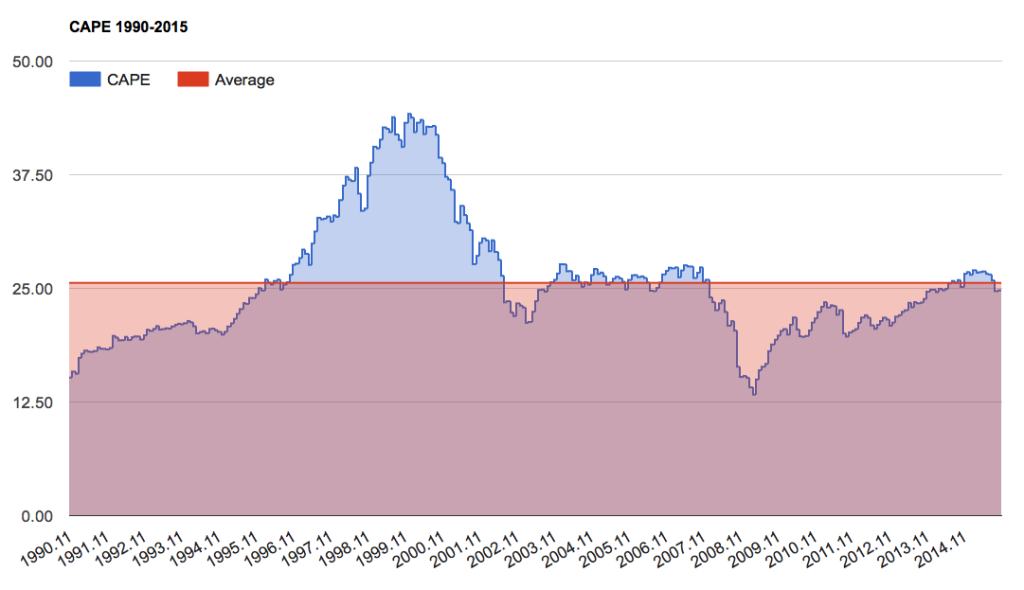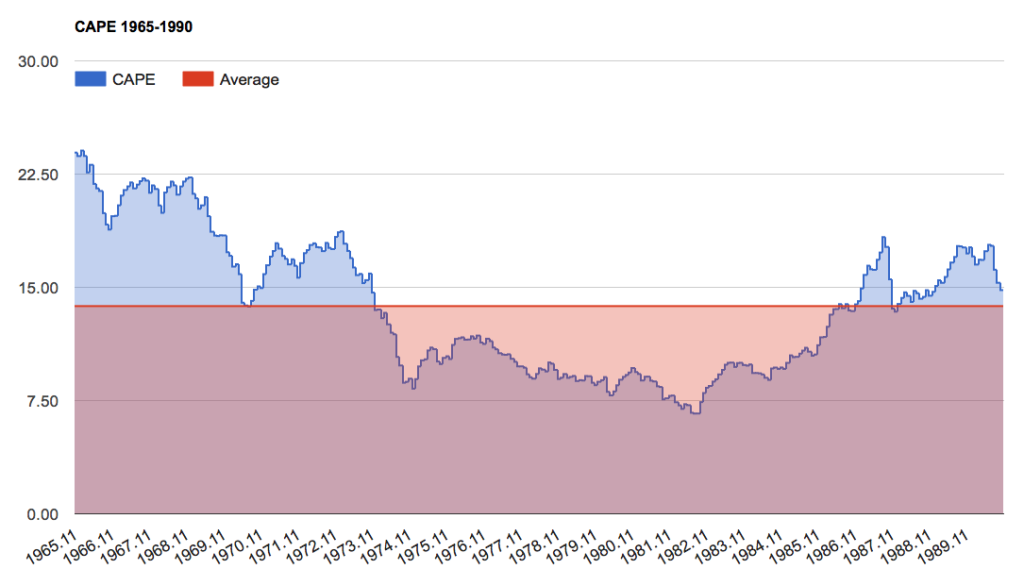There’s a popular chart going around lately that proclaims, “stocks are not overvalued.” In making this argument, it relies entirely on the fact that the current CAPE ratio, developed by Nobel Laureate Robert J. Shiller, is now below its 25-year average.
There are two major problems with this argument. First, the last 25 years represent the highest sustained valuations in the history of our stock market. Second, these elevated valuations are built upon corporate profit margins which are also now extremely high relative to history. Thus, you should be comfortable with this measure only if you believe it reasonable to extrapolate both of these extreme phenomena indefinitely into the future (which I have argued is the single greatest mistake investors make).
Below, I’ve recreated the 25-year CAPE chart, taking the data directly from Shiller’s website. The CAPE ratio essentially reflects the price of stocks relative to their 10-year average earnings. Shiller chose this valuation method in order to dampen the effect of the business cycle. The shaded red area in the chart represents the 25-year average, of 25.6, and below. You can see the recent selloff has brought stocks back below the red line.

But let’s take a look at the prior 25 years. Clearly, based on their 10-year earnings, stocks were far cheaper during the 1965-1990 period than the were during the following 25 years. At a mere 13.76, the average CAPE during this earlier 25-year period was about half what it was during the most recent one. Excluding this period from study then has the effect of seriously inflating the final valuation average used in arguing, “stocks are not overvalued.”

Now let’s look at the entire 50-year period. The average now moves to 19.68. Stocks don’t look extremely overvalued in this light but they are certainly well above this long-term average. (To illustrate just how expensive stocks are based upon this measure, if the S&P 500 was to immediately fall back to its 50-year average valuation, it would lose 23% of today’s value.)












Leave A Comment